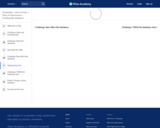
How to combine data from a database using SQL.
- Subject:
- Applied Science
- Computer Science
- Material Type:
- Interactive
- Lesson
- Provider:
- Khan Academy
- Provider Set:
- Khan Academy
- Author:
- Pamela Fox
- Date Added:
- 07/11/2021

How to combine data from a database using SQL.

An overview of altering tables after creation

This course teaches the design of contemporary information systems for biological and medical data. Examples are chosen from biology and medicine to illustrate complete life cycle information systems, beginning with data acquisition, following to data storage and finally to retrieval and analysis. Design of appropriate databases, client-server strategies, data interchange protocols, and computational modeling architectures. Students are expected to have some familiarity with scientific application software and a basic understanding of at least one contemporary programming language (e.g. C, C++, Java, Lisp, Perl, Python). A major term project is required of all students. This subject is open to motivated seniors having a strong interest in biomedical engineering and information system design with the ability to carry out a significant independent project.
This course was offered as part of the Singapore-MIT Alliance (SMA) program as course number SMA 5304.
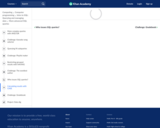
An overview of calculating results with CASE
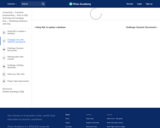
An overview of changing rows with UPDATE and DELETE
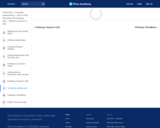
How to combine multiple joins
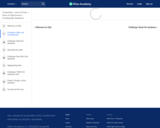
How to use SQL to create a table and insert data into a database.
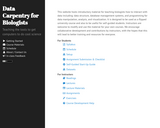
The Biology Semester-long Course was developed and piloted at the University of Florida in Fall 2015. Course materials include readings, lectures, exercises, and assignments that expand on the material presented at workshops focusing on SQL and R.
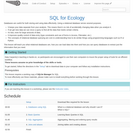
Databases are useful for both storing and using data effectively. Using a relational database serves several purposes. It keeps your data separate from your analysis. This means there’s no risk of accidentally changing data when you analyze it. If we get new data we can rerun a query to find all the data that meets certain criteria. It’s fast, even for large amounts of data. It improves quality control of data entry (type constraints and use of forms in Access, Filemaker, etc.) The concepts of relational database querying are core to understanding how to do similar things using programming languages such as R or Python. This lesson will teach you what relational databases are, how you can load data into them and how you can query databases to extract just the information that you need.
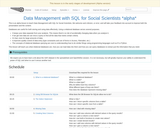
This is an alpha lesson to teach Data Management with SQL for Social Scientists, We welcome and criticism, or error; and will take your feedback into account to improve both the presentation and the content. Databases are useful for both storing and using data effectively. Using a relational database serves several purposes. It keeps your data separate from your analysis. This means there’s no risk of accidentally changing data when you analyze it. If we get new data we can rerun a query to find all the data that meets certain criteria. It’s fast, even for large amounts of data. It improves quality control of data entry (type constraints and use of forms in Access, Filemaker, etc.) The concepts of relational database querying are core to understanding how to do similar things using programming languages such as R or Python. This lesson will teach you what relational databases are, how you can load data into them and how you can query databases to extract just the information that you need.

Database Management Systems is the software that allows us to create and use a database. This video looks at the DBMS, their functions, some examples of popular software solutions and a quick look at Structured Query Language (SQL)
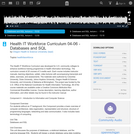
This unit discusses the purposes of databases, a relational database, and the querying language SQL. Students will design a simple database using data modeling and normalization. This unit will define basic data operations, provide instruction on how to create common query statements, and discuss SQL implementation.
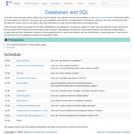
Software Carpentry lesson that teaches how to use databases and SQL In the late 1920s and early 1930s, William Dyer, Frank Pabodie, and Valentina Roerich led expeditions to the Pole of Inaccessibility in the South Pacific, and then onward to Antarctica. Two years ago, their expeditions were found in a storage locker at Miskatonic University. We have scanned and OCR the data they contain, and we now want to store that information in a way that will make search and analysis easy. Three common options for storage are text files, spreadsheets, and databases. Text files are easiest to create, and work well with version control, but then we would have to build search and analysis tools ourselves. Spreadsheets are good for doing simple analyses, but they don’t handle large or complex data sets well. Databases, however, include powerful tools for search and analysis, and can handle large, complex data sets. These lessons will show how to use a database to explore the expeditions’ data.

This graduate seminar is taught in a lecture and lab exercise format. The subject matter is tailored to introduce Environmental Engineering students to the use and potential of Geographic Information Systems in their discipline. Lectures will cover the general concepts of GIS use and introduce the material in the exercises that demonstrate the practical application of GIS.
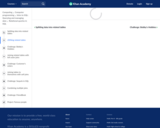
An overview of JOINing related tables
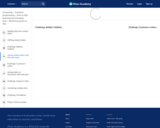
An overview of joining related tables with left outer joins
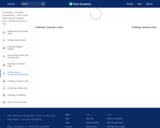
An overview of joining tables to themselves with self-joins

Une base de données est un ensemble volumineux de données, structuré et stocké sur un support permanent, et géré efficacement par les systèmes de gestion de bases de données SGBD. Ce cours présente les Caractéristiques des SGBD ainsi que des modèles de données à travers UML : Diagramme de classes (associations binaires et ternaires, réflexives, classes-association). Il aborde aussi la Normalisation (les 3 premières formes normales). Traduction du diagramme des classes en tables dans le respect des formes normales. la mise en œuvre se fera à travers le langage normalisé Structured Query Language (SQL).
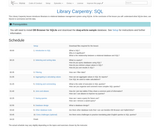
Library Carpentry, an introduction to SQL for Librarians This Library Carpentry lesson introduces librarians to relational database management system using SQLite. At the conclusion of the lesson you will: understand what SQLite does; use SQLite to summarise and link data.
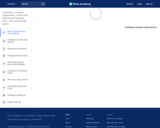
Using AND/OR in SQL queries.